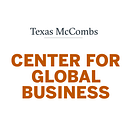Reopening is Not an Algorithmic Decision
Courtesy of Kishore Gawande, Professor, McCombs School of Business at The University of Texas at Austin
It is a bit naïve to suggest that the decision about when to re-open is (a positive question) or should be (a normative one) based on risk calculation. First, policymakers make these decisions, not an algorithm based on risk neutrality. There are two layers to the decisions, the preference of individuals and the preference of the policymaker — the person with the power over the reopening decision.
The preference of the policymaker “aggregates” the preference of constituents into policy. If it was algorithm, and the second layer is absent, you would simply take a poll of constituents, sampling randomly, and asking them the single question of whether they would like to reopen businesses and workplaces (understanding that social distancing norms are in place in the new economy). Giving constituent’s preference equal weight, as readers of poll results might do, implies what the “best” policy is. This simple aggregation of preferences with equal weights generates the policy prescription that, for example, comes out in headlines based on of the recent Harvard-Northeastern-Rutgers (HNR) poll taken of 23,00 individuals across the 50 states in April. A majoritarian decision, based on this poll, would be to keep the economy closed, as of May 1.
There are a number of problems, however. The poll massively simplifies people’s risk preferences by forcing them to map the complexity of their preferences to a Yes/No answer. What if people were allowed to rate how strongly they feel about opening the economy on a (continuous) scale of 1–10 (so 7.586 is a perfectly good answer). The advantage is great, because it allows people to express a view that states much more about their preference than a coarse Yes/No poll forces upon them. The greater accuracy, an essential feature of good decision-making based on risk, also introduces a greater complication: risk assessments can be heterogeneous, meaning no two people’s risk assessment may be the same. Even had two persons answered Yes to the HNR poll, they may differ widely on the scale. The heterogeneity may be due to so many factors — age, health, income, and more importantly, things that are unobservable to anyone other than the poll-taker such as their mindset, culture and ability. Should such heterogeneity matter to the decision maker? Of course, it should — we’re amazing individuals! Does it make the decision harder? Of course, it does.
A message is that the reopening decision should be a decentralized one. In the US different regional preferences are already reflected in the kinds of policymakers we choose. Many would rather Governor Abbot make this decision then a federal mandate. But great heterogeneity in preferences exist within states. Suppose a region’s population is older, meaning the negative externalities from opening are higher. Should an older person get a larger weight than a younger person when making the decision whether to reopen?
This is not a moral but a practical question mediated by institutions. We live in a country with democratic institutions, and the decision maker aggregates these weights using a political calculus. Not only does a (decentralized) decision maker want to do good by their public, but the decision makes wants to continue to do good, meaning she wants her actions today to re-elect her tomorrow. In theory, if there were no heterogeneity, the “median voter” theorem would be a good approximation of how a policymaker may behave. She will simply look at the median voter — the “swing” voter — in her district and reopen if that is the median voter’s preference.[1] The Harvard-Northeastern-Rutgers survey may be modified if we have that information about individuals who answered the poll.
Unfortunately, the median voter idea does not necessarily work when individual’s risk preferences are heterogeneous. A policymaker — the person with the power to make this decision — must translate her constituents’ preferences into policy. She must “aggregate” their preferences into a decision. How does the policymaker decide? Ideology may play a role. For example, Gov. Abbot calculates that, unlike New Yorkers, Texans are made of harder stuff and the majority have a higher risk tolerance for reopening. He is aggregating preferences based on a greater tolerance for risk that he would if he were governor of a state with a higher infection rate and lower risk tolerance. Fair enough, but I would like to clearly see the basis for this decision. We Texans are an informed bunch, and like to understand the basis for a decision. Even older Texans are fine with a decision to reopen if this is a transparent, informed decision, supported by a majority. The Harvard-Northeastern-Rutgers survey then may yield the same decision but it may also yield the opposite one.
It is a therefore bit naïve to suggest that the decision about when to re-open is based on a simple risk calculation. It has an institutional context and a political calculus. I imagine this political economic logic is at the heart of how leaders around world determine whether and when to reopen their economies.
* * *
[1] Things are less simple when money can buy votes, but the idea of a swing voter can still translate to the person who pays the “median” dollar to swing the vote.
